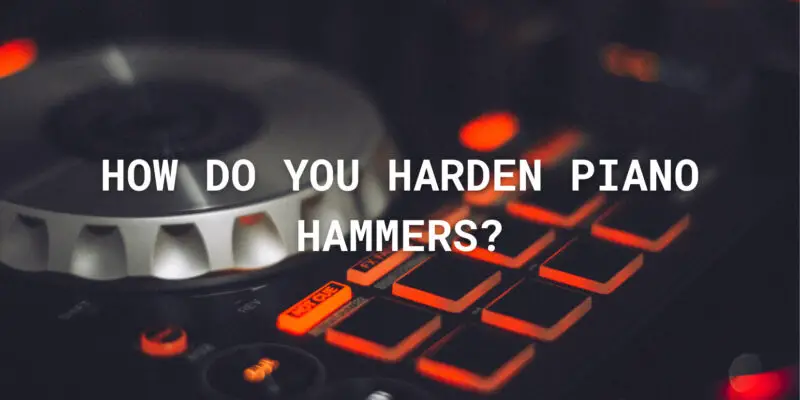Piano hammers are integral to the production of the beautiful, resonant tones that emanate from this cherished musical instrument. Over time, the felt-covered hammers can wear down, resulting in a less-than-ideal sound quality. To restore the hammers to their optimal condition, piano technicians use a process called voicing, which includes the adjustment of hardness. In this article, we will delve into the technique of hardening piano hammers and why it is crucial for maintaining a piano’s exquisite sound.
The Role of Piano Hammers
Piano hammers, made of a wooden core surrounded by layers of dense felt, are responsible for striking the strings when the keys are pressed. The quality of the felt and the resilience of the hammers significantly impact the piano’s tone. Over time, hammers can become worn, compressed, or grooved, affecting the instrument’s playability and sound quality.
Why Harden Piano Hammers?
Harden hammers refers to the process of adjusting the density and resilience of the hammer felt to achieve the desired tone and response. Here are some reasons why hardening piano hammers may be necessary:
- Tonal Balance: Over time, hammers may wear unevenly, causing tonal imbalances across the keyboard. Hardening allows for the correction of these imbalances, ensuring a consistent tone across all keys.
- Compensation for Softening: As hammers age, the felt may become softer and less resilient. This can result in a duller tone. By hardening the hammers, technicians can restore brightness and clarity to the piano’s sound.
- Voicing: Voicing is the process of shaping the hammers to achieve the desired tonal characteristics. Adjusting the hardness of the hammers is a crucial part of the voicing process, allowing pianists to customize the instrument’s sound to their preferences.
The Process of Hardening Piano Hammers
Hardening piano hammers involves several steps and requires the expertise of a trained piano technician:
- Assessment: The technician begins by assessing the condition of the hammers and determining the degree of hardness adjustment required.
- Needling: Needling is a process where the technician uses fine needles to prick the surface of the hammer felt. This opens up the fibers and can make the felt firmer. The depth and density of needling can be adjusted to achieve the desired hardness.
- Ironing: Ironing is another technique used to harden hammers. It involves carefully heating and compressing the felt, increasing its density. This process can be repeated as needed to achieve the desired hardness.
- Voicing: After hardening, the hammers are voiced to shape the tone. This involves further adjustments to the hammer felt to achieve the desired brightness, mellowness, and dynamic range.
- Testing: The piano is then thoroughly tested to ensure that the desired tonal characteristics have been achieved. The technician listens for consistency in tone and responsiveness across the keyboard.
Conclusion
The process of hardening piano hammers is a skilled and delicate operation performed by trained piano technicians. It is a vital step in maintaining and optimizing a piano’s sound quality and playability. Through needling, ironing, and voicing, piano technicians can adjust the hardness of hammers to correct tonal imbalances, compensate for softening over time, and customize the instrument’s sound to meet the preferences of pianists and musicians. This meticulous process ensures that the piano continues to produce the captivating and expressive tones that make it a beloved musical instrument.


